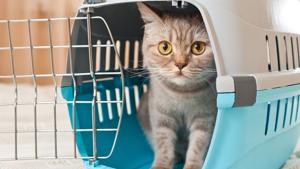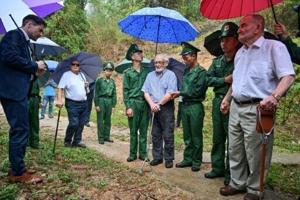
Approximately 10 million pets are lost annually in the United States, and many of them never make it home. Now add the complication of being overseas when your cherished pet disappears.
For pet owners facing the nightmare of a lost cat abroad, a crucial resource is the collaboration of international animal welfare organizations and online platforms dedicated to lost and found pets. Websites and social media groups serve as virtual bulletin boards where owners can post information about their missing felines and receive support from a global network of fellow pet lovers.
The Power of Social Media and Online Networks
Facebook groups boast a vast database of lost and found pets. The groups, typically representing specific regions, encourage contributors to share photos of missing or found pets, allowing other users to search through sightings and share information quickly. The power of social media has facilitated countless reunions, with users mobilizing to spread the word and coordinate rescue efforts.
According to the Animal Humane Society, one in three pets will go missing. Pets slip out of collars and leashes or sneak out of homes, crates, or yards are common.
Traveling with pets is increasingly common in today’s interconnected world. Many families opt to bring their furry friends along on vacations or relocations. However, the excitement of exploring new destinations can quickly turn to panic if animals flee in unfamiliar environments, especially when traveling internationally.
The emotional toll of losing a pet transcends borders and resonates with pet owners globally. In response, governments and international organizations work to streamline pet reuniting services.
Importance of Microchipping and Standardized Pet Passports
The European Union’s regulations require all pet cats to be microchipped and vaccinated against rabies before traveling between member states. Additionally, standardized pet passports provide comprehensive health and identification data, facilitating seamless travel and identification amid loss.
Despite numerous advancements, challenges persist, particularly in regions where pet identification practices are not standardized or enforced. Language barriers, bureaucratic red tape, and cultural differences complicate pet search efforts, prolonging owner anguish.
Fortunately, a growing resource and organization network exists to promote pet and owner reunification. International pet recovery services, such as PetLink, offer databases wherein owners can register their furry friend’s microchip information and report missing pets. These platforms facilitate communication among owners, shelters, and veterinary clinics, streamlining search processes and increasing reunification probability.
Websites like Floppycats.com offer valuable feline breed guides, expanding on essential aspects like Ragdoll cat size comparison to other breeds. Comprehensive breed knowledge and trait identification abilities help owners and searchers identify missing pets. Enhanced pet recognition abilities can also enrich communication with authorities or organizations through the reunion process.
The Role of Ragdoll Rescue and Similar Organizations
In cases where reunions seem improbable due to distance or circumstances, organizations like Ragdoll Rescue offer hope by facilitating adoptions and fostering connections between cats and potential families.
Moreover, factors like Ragdoll cat price can also come into play, especially when dealing with legalities or reimbursement processes associated with cross-border reunions. Understanding the market value of specific breeds can ensure fair treatment and compensation for both owners and their companions. These resources contribute to smoother and more equitable reunification efforts by providing transparent information on pricing trends and considerations.
Proactive Measures for Safe International Travel
Microchipping and identification tags play fundamental roles in successful pet recovery. Small implants, typically injected between a cat’s shoulder blades, contain unique identification numbers linked to a centralized database of owner contact information. When veterinarians or animal shelters scan these microchips, they can access the pet’s family’s contact information, significantly shortening searches for pet families.
Though chips are modern pet essentials, visible identification tags remain a standard pet accessory. Typically clipped to cat collars, these traditional tags should bear the owner’s name, contact number, and pertinent medical information. This visible ID can expedite reuniting lost cats with their owners, particularly in areas where microchip scanners are unavailable.
For pet owners embarking on international travel with their feline companions, proactive measures can help mitigate the risk of loss. In addition to microchipping and proper identification, precautions such as keeping cats confined in carriers during transit and ensuring secure accommodations can minimize the likelihood of escape.
The Future of Lost Pet Reunions
As technology evolves and global connectivity expands, the prospect of reuniting lost pets with their families across borders grows ever more promising. With each success story, the human-animal bond reminds us that love knows no boundaries.
However, as the number of pet owners traveling with cats continues to rise, so does the need for accessible pet owner resources and support systems. Microchipping, visible identification, and awareness of international pet recovery services increase owners’ chances of a successful reunion with their feline companions, no matter the distance or borders crossed.



